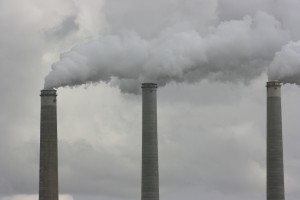- Tahoe’s Nevada Beach Tops the List of Hard-to-Book Campgrounds - 07/17/2024
- Cannabis Watershed Protection Program Cleans Up Illegal Grow Sites - 07/10/2024
- French Fire - 07/05/2024
I understand the Environmental Protection Agency recently took steps to limit pollution from power plants. What are the details?
— Maddie Samberg, via e-mail
In March 2012 the U.S. Environmental Protection Agency (EPA) proposed the first nationwide emission standards to limit carbon dioxide emissions from new coal- and gas-burning power plants. And while the operative word here is “new”—the standards would not apply to plants currently in operation or those that begin construction over the next year—they would effectively cut carbon emissions in half over the lifetime of a new power plant. According to the EPA, the standards reflect the ongoing trend in the power sector toward cleaner plants deploying the latest in American-made pollution minimizing technologies.
“The nation’s electricity comes from diverse and largely domestic energy sources, including fossil fuels, nuclear, hydro and, increasingly, renewable energy sources,” reports the EPA. “The proposed standard would not change this fact, and EPA put a focus on ensuring this standard provides a pathway forward for a range of important domestic resources, including coal with technologies that reduce carbon emissions.”
New plants could still choose to burn any fossil fuel to generate electricity as long as modern carbon reduction technologies are employed.
Environmentalists are cheering the EPA’s move given that power plants are the largest individual sources of carbon pollution in the U.S., responsible for some 40 percent of our overall greenhouse gas emissions. Despite this huge pollution burden, currently there are no uniform national limits on the amount of carbon pollution that future power plants will be able to emit.
“The Supreme Court has found in two landmark cases, Massachusetts v. EPA and American Electric Power v. Connecticut, that it is the EPA’s job under the Clean Air Act to protect the American people from dangerous carbon pollution, including the carbon pollution from the nation’s fleet of new and existing power plants,” reports David Doniger of the Natural Resources Defense Council (NRDC), another leading environmental non-profit backing stronger pollution standards. “EPA’s ‘new source performance standard’ for new power plants…is a critical step towards providing that protection.”
Greens are optimistic that the proposal will become a rule. In concert with clean car standards the EPA announced in 2010—mobile sources contribute some 30 percent to our overall carbon emissions—the new power plant standards should help take a significant bite out of U.S. greenhouse gas pollution.
“These standards will help further the progress we are making towards a cleaner, more secure future for energy in America,” says Fred Krupp, president of the non-profit Environmental Defense Fund (EDF). “We will use our nation’ electricity resources more efficiently to cut energy costs for families and businesses, mobilize ‘Made in the USA’ technologies and fuels for cleaner energy generation, and ensure that America will lead the global race to a clean energy economy.”
CONTACTS: EPA “Carbon Pollution Standard for Power Plants,” epa.gov/carbonpollutionstandard; NRDC, www.nrdc.org; EDF, www.edf.org.
EarthTalk® is written and edited by Roddy Scheer and Doug Moss and is a registered trademark of E – The Environmental Magazine ( www.emagazine.com). Send questions to: earthtalk@emagazine.com. Subscribe: www.emagazine.com/subscribe. Free Trial Issue: www.emagazine.com/trial.














